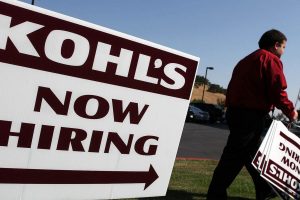American companies are struggling to hire workers, but BofA sees that fading by early 2022

- Many US businesses are facing worker shortages as the economy starts to reopen.
- The unusual dynamic will fade by early 2022 as the labor market rebounds, BofA economists said.
- Expanded unemployment benefits and COVID-19 fears are likely keeping many from seeking work, they added.
- See more stories on Insider’s business page.
A McDonald’s paying people to interview for jobs. Uber drivers holding off on rides in hopes of higher pay. Millions of payrolls possibly vanishing altogether.
The US economy is still down roughly 8.4 million jobs since the pandemic first fueled massive layoffs. That suggests hiring would quickly bounce back as the country reopens and Americans get back to spending as usual. But the opposite effect is taking place. Instead of an oversupply of workers meeting weaker demand, businesses looking to hire are coming up against a shortage of Americans seeking employment.
That shortfall is presenting an unusual and unexpected challenge to the broader recovery. Without a return to pre-pandemic employment, consumer spending will trend below its potential and leave less money flowing through the economy.
Bank of America economists aren’t particularly concerned. The shortage is likely driven by expanded unemployment benefits included in the latest stimulus package, concern around catching the coronavirus, and home-schooling demands for working couples, the team led by Michelle Meyer said in a Friday note. The bank expects that dynamic to fade by early 2022 as stimulus expires and more Americans are vaccinated.
“Therefore by early next year, COVID-related labor shortages will likely be replaced by ‘traditional’ shortages because of a hot labor market,” the economists added.
The team reiterated its expectation for the unemployment rate to fall to 4% by the end of 2021. The rate currently sits at 6%, but the government’s latest payrolls report suggests monthly job additions will average about 1 million in the near term.
Still, the “traditional” labor shortages expected to emerge next year will present new constraints, according to the bank. The red-hot labor market could “make it difficult” for ports to reach pre-pandemic employment levels even after the health crisis ends, the team said. Such setbacks could further increase factory backorders, which already swelled in recent months due to supply chain disruptions.
The amount of time Americans spend disengaged from the labor force could also slow the recovery. The post-pandemic economy won’t be the same as the one seen before the outbreak, and those changes will make the return to work difficult for millions of Americans, Federal Reserve Chair Jerome Powell said in March.
“The real concern is that longer-term unemployment can allow people’s skills to atrophy, their connections to the labor market to dwindle, and they have a hard time getting back to work,” he said, adding the central bank needs to “keep supporting them” as the labor market creeps toward a full recovery.
Get the latest Bank of America stock price here.
Source: Read Full Article
